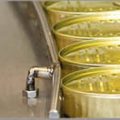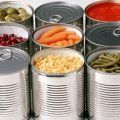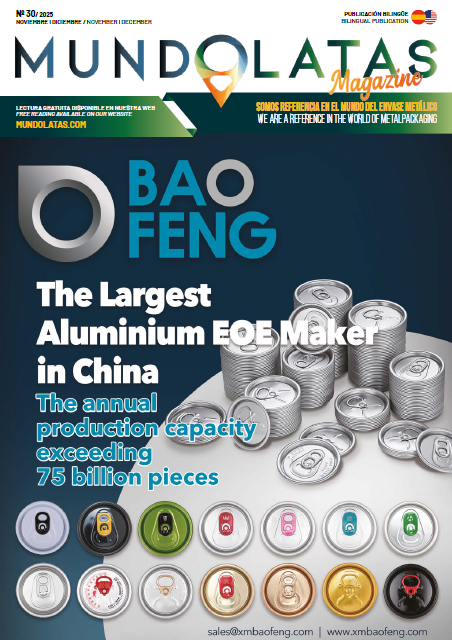Did you know that the canning process has been key to ensuring food availability and freshness for decades? In this article, we will explore the fundamental role played by aluminum and tinplate in the preservation of canned foods. We will discover how these metals have revolutionized the food industry and the advantages they offer. In addition, we will talk about sustainability and recycling. Get ready to dive into a world full of culinary innovation!
The preservation of canned foods has played a fundamental role throughout history, allowing products to be stored for extended periods of time without losing their quality. This has been especially crucial in situations where access to fresh food is limited or during emergencies.
How does canned preservation work? This is a question many people ask when discussing canned foods. The answer lies in the canning process itself, which consists of sealing food inside a metal container to protect it from air, light and microorganisms.
Canned preservation works thanks to the existence of aluminum and tinplate as a protective barrier against harmful external agents and through a heat-resistant process that guarantees greater durability and safety of the final product. This way we can enjoy our favorite foods for a longer period of time in complete safety and without losing their original flavor.
The use of aluminum and tinplate for canned food preservation offers a number of important advantages. These metals are widely used in the food industry due to their unique properties that allow food to be preserved for long periods of time.
One of the key advantages is its resistance to corrosion, which ensures that the containers remain intact and airtight, preventing any external contamination. In addition, aluminum and tinplate are lightweight but strong materials, making them easy to transport and handle for both manufacturers and consumers.
Another important advantage is its ability to effectively protect against external factors such as light, air and humidity. These metals act as a protective barrier, preventing harmful elements from adversely affecting the packaged food.
In addition, the canning process preserves the organoleptic qualities (flavor, texture) of the products for much longer. This means that we can enjoy the original, intense flavor of our favorite foods even months or years after packaging.
The canning process involves sealing food inside airtight containers made mainly of aluminum and tinplate. These metals provide a protective barrier against external factors such as oxygen, light and moisture, thus preventing deterioration and bacterial proliferation.
An outstanding advantage of using aluminum and tinplate is their durability. These materials are resistant to accidental bumps and drops, ensuring that products arrive intact in our pantries. In addition, its light weight makes it easy to transport and easy to handle on a daily basis.
On the other hand, tin forms a protective layer on the inner surface of the metal tinplate container, preventing possible chemical reactions between the food and the metal. This ensures that there are no alterations in flavor or quality during storage.
Once hermetically sealed inside the metal cans, the food is subjected to high temperatures to eliminate any bacteria or microorganisms present. This heat also helps to extend the shelf life of the product by killing the bacteria responsible for food spoilage.
Thanks to this technique, we can enjoy a wide variety of canned foods, from fruits and vegetables to soups and fish. It also provides the convenience of having meals ready to eat at any time.
It is also important to mention that these metals are highly recyclable. Recycling aluminum and tin significantly reduces the need to extract new natural resources and even contributes to reducing the carbon emissions associated with their production.
Aluminum is a very common and light metal characterized by its high corrosion resistance, malleability and low density. Thanks to these qualities, it is an ideal material for use in the manufacture of beverage cans, from soft drinks to packaged cocktails. Its natural oxide layer acts as a protective barrier against environmental factors, preventing the can from rusting and keeping the product fresh inside.
In addition, aluminum has an excellent ability to conduct heat, allowing beverages to cool quickly when placed in a cooler or ice bucket. Cans are especially useful for containing non-carbonated foods due to their durability and resistance to high temperatures during canning processes. In addition, the cans can be customized with decorative labels and specific markings.
The aluminum material is highly recyclable and can be melted for reuse without losing much quality. In addition, the aluminum recycling process is both economically and environmentally beneficial, making it an excellent choice for sustainability-conscious consumers.
In the food and beverage industry, aluminum cans have become very popular due to their low weight and corrosion resistance. One of their greatest advantages is their ability to preserve the freshness and flavor of the products they contain. This is because they prevent light and oxygen from coming into contact with the contents, which can adversely affect certain products such as carbonated beverages like soft drinks and beer.
Recycling cans presents some challenges compared to aluminum. Although the steel used in the cans is recyclable, its tin layer complicates the process. More steps are required to separate these materials, making it less energy efficient compared to aluminum recycling. Fortunately, technological advances are constantly improving the recyclability of cans.
When choosing between aluminum or tinplate cans, it is important to take into account the type of product and the consumer’s preferences. While aluminum cans are more suitable for beverages, tinplate cans are ideal for foods with a longer shelf life. Each material has its advantages, so it is important to make an informed decision based on the consumer’s personal preferences and sustainability goals.
In conclusion, we should not underestimate the vital importance of canned food preservation for our daily diet. Thanks to the use of aluminum and tinplate, we can enjoy fresh and tasty food at any time, at the same time














